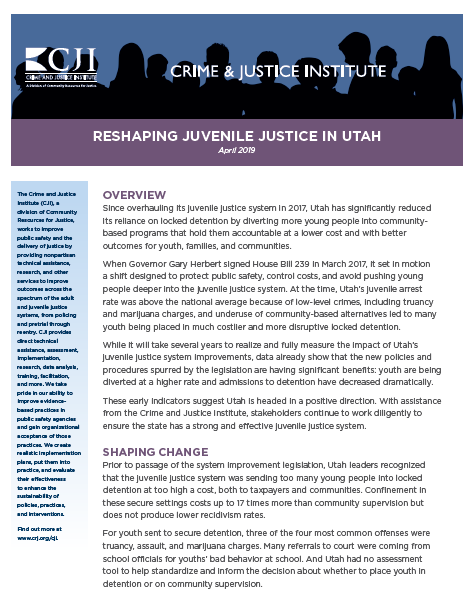
Since overhauling its juvenile justice system in 2017, Utah has significantly reduced its reliance on locked detention by diverting more young people into community-based programs that hold them accountable at a lower cost and with better outcomes for youth, families, and communities.
When Governor Gary Herbert signed House Bill 239 in March 2017, it set in motion a shift designed to protect public safety, control costs, and avoid pushing young people deeper into the juvenile justice system. At the time, Utah’s juvenile arrest rate was above the national average because of low-level crimes, including truancy and marijuana charges, and underuse of community-based alternatives led to many youth being placed in much costlier and more disruptive locked detention.
While it will take several years to realize and fully measure the impact of Utah’s juvenile justice system improvements, data already show that the new policies and procedures spurred by the legislation are having significant benefits: youth are being diverted at a higher rate and admissions to detention have decreased dramatically.
These early indicators suggest Utah is headed in a positive direction. With assistance from the Crime and Justice Institute, stakeholders continue to work diligently to ensure the state has a strong and effective juvenile justice system.
Click here to read the report.